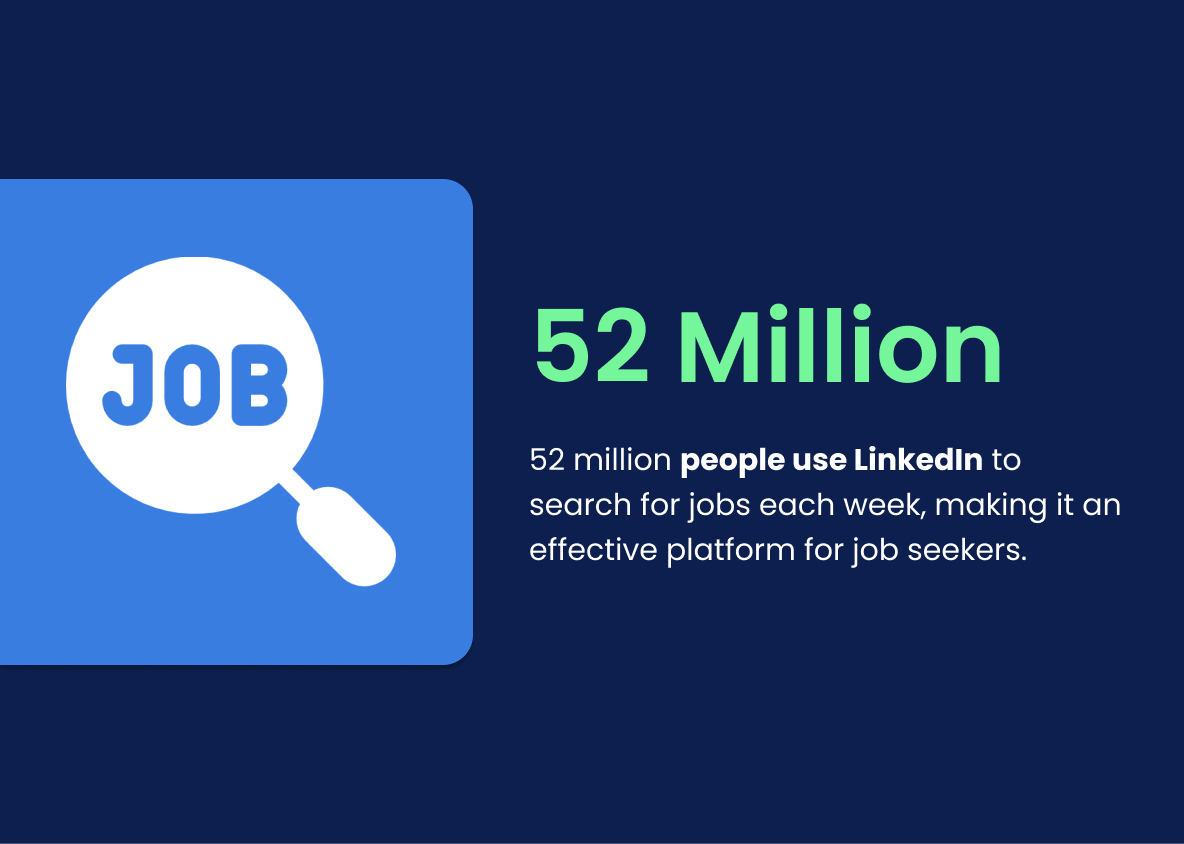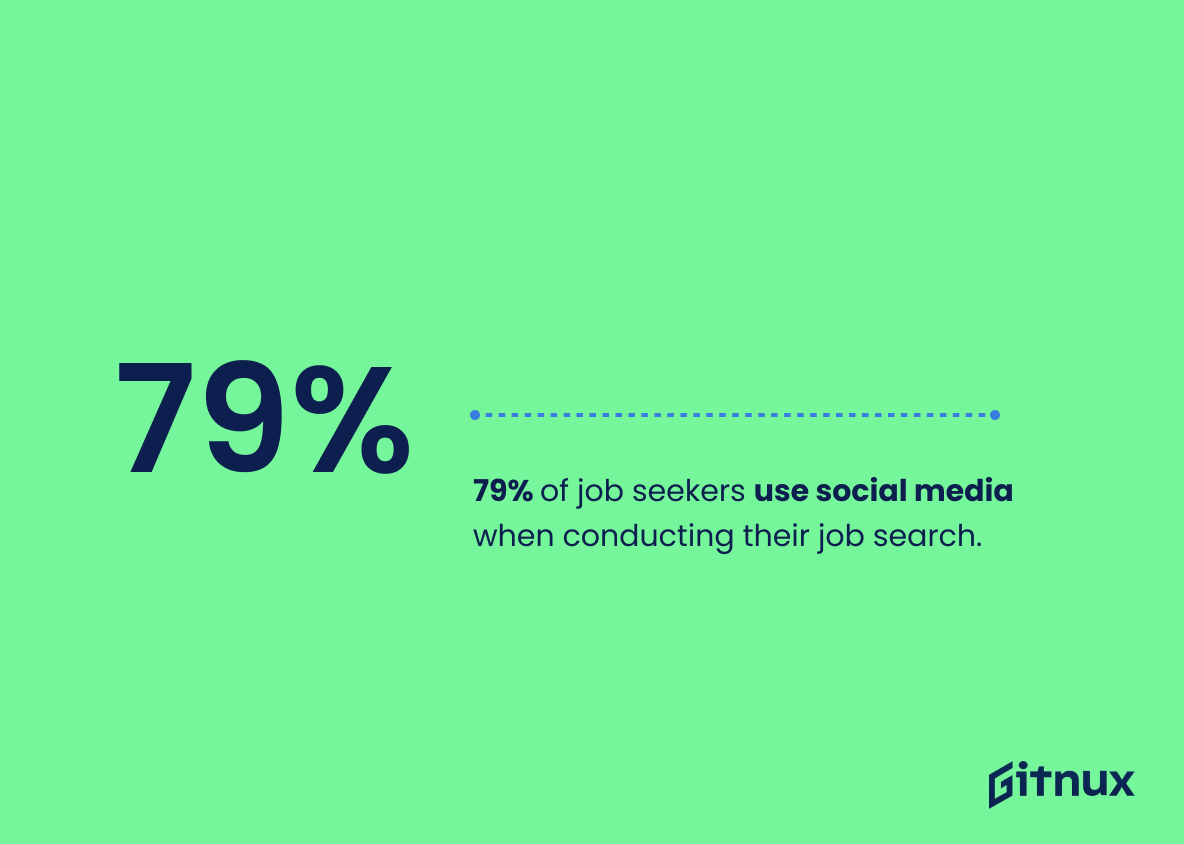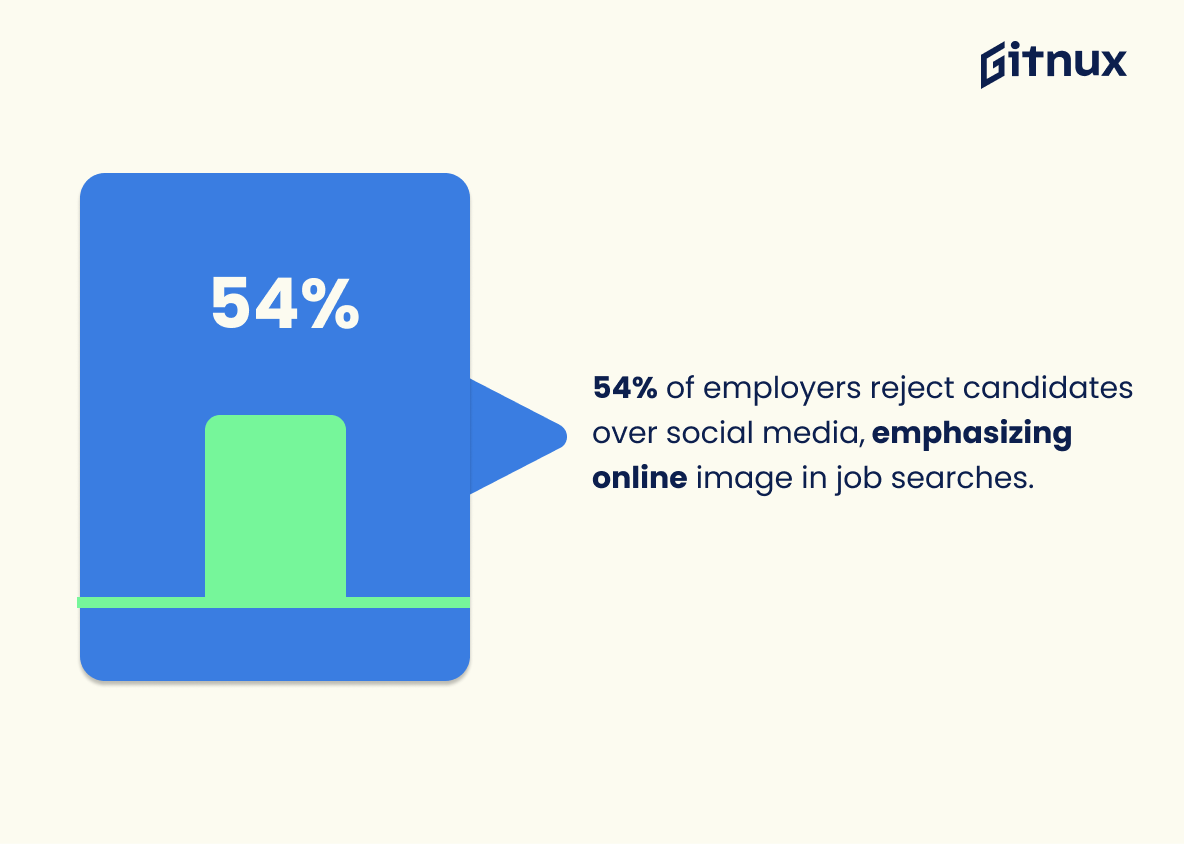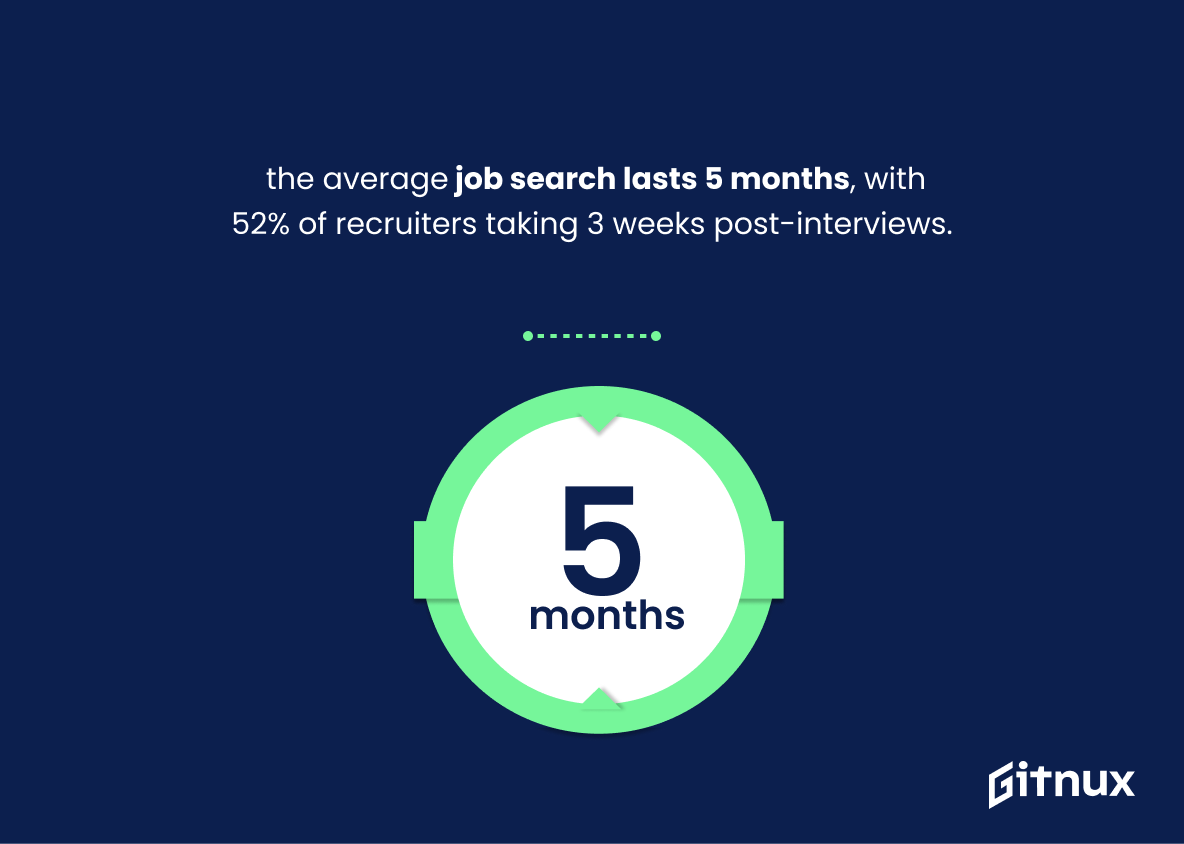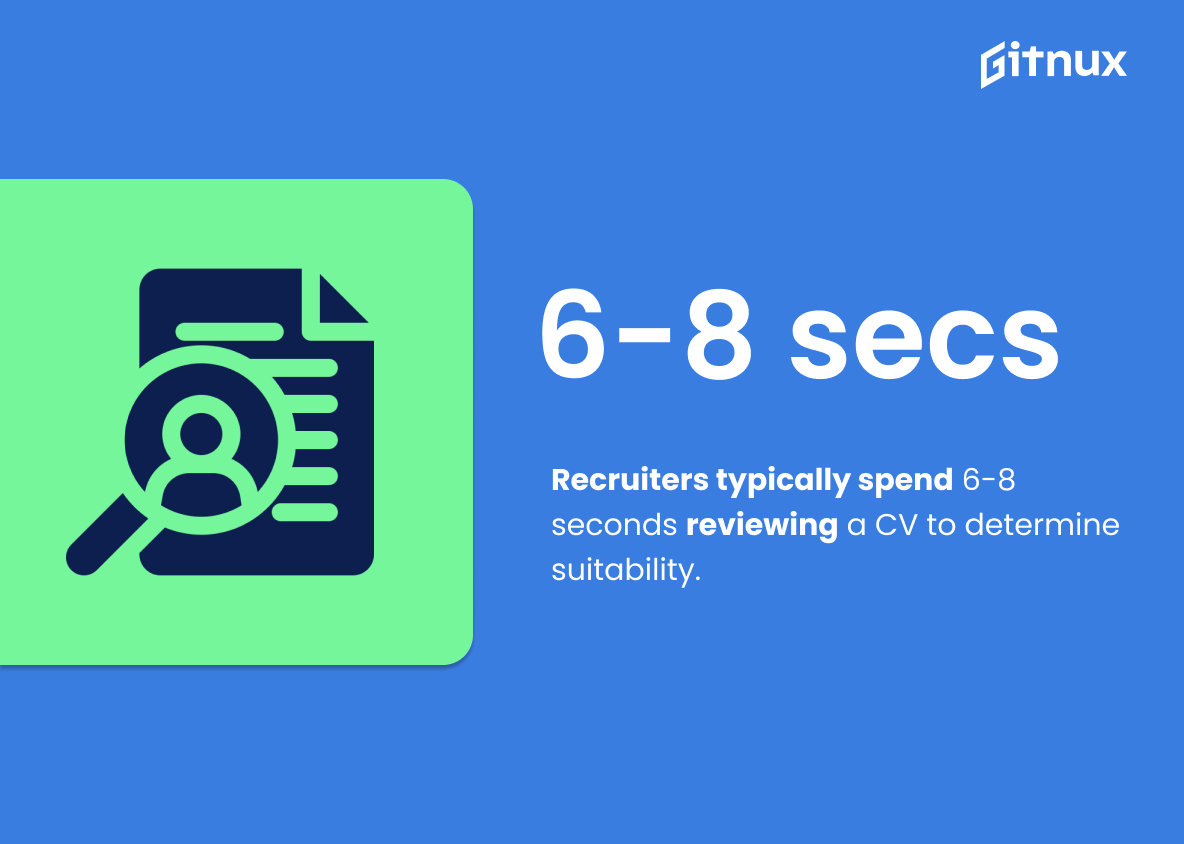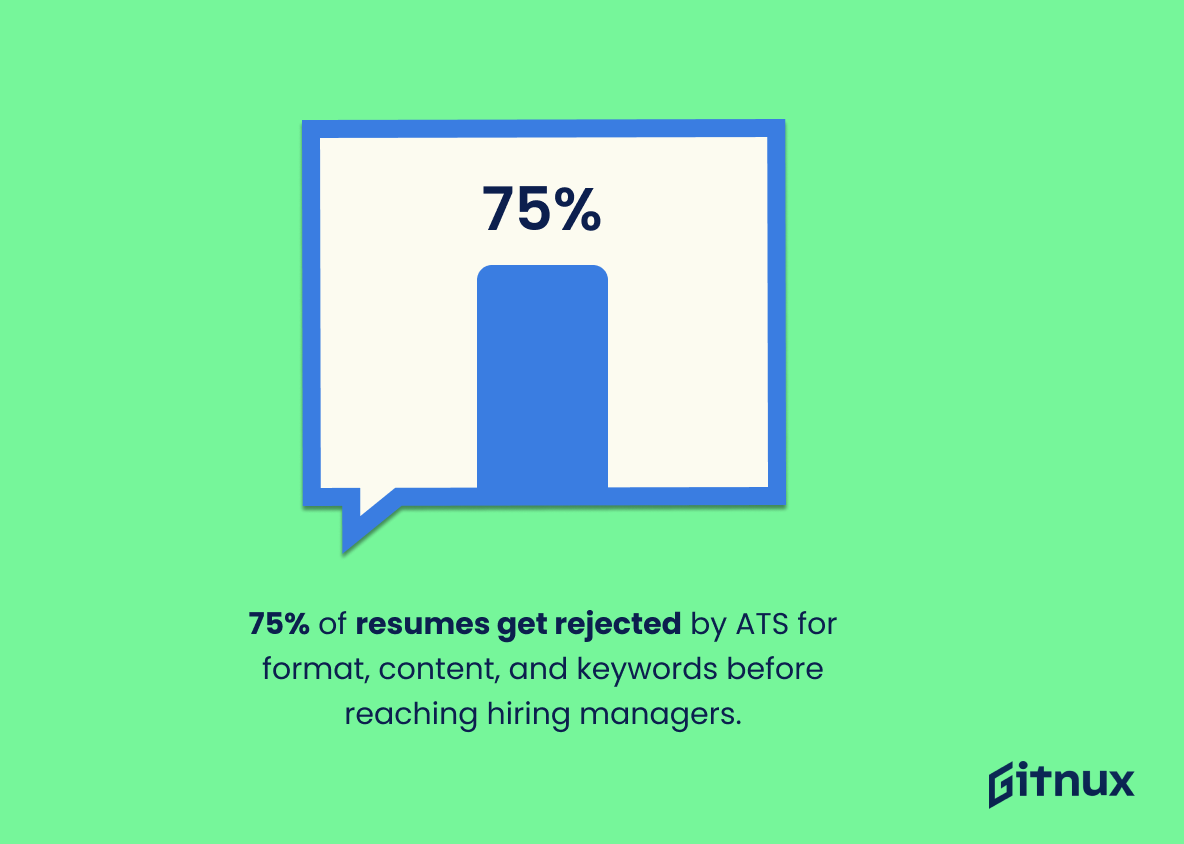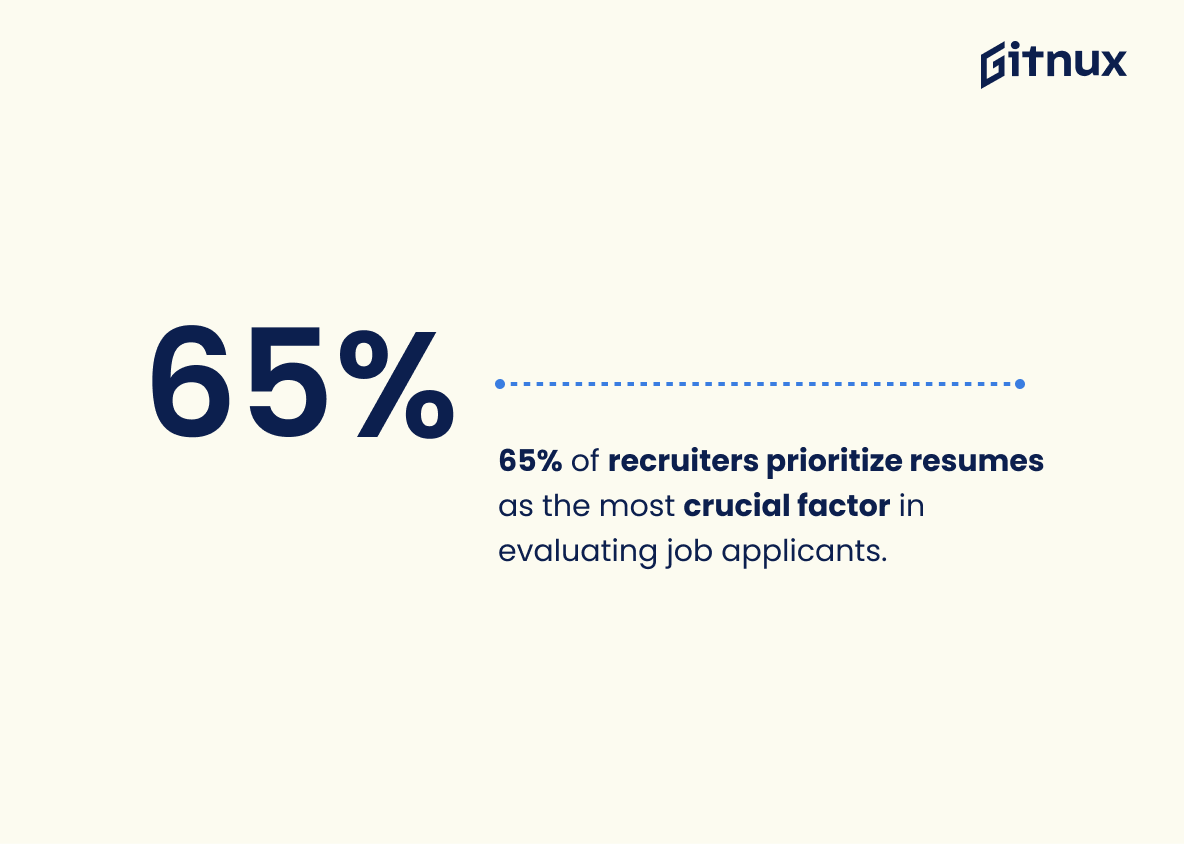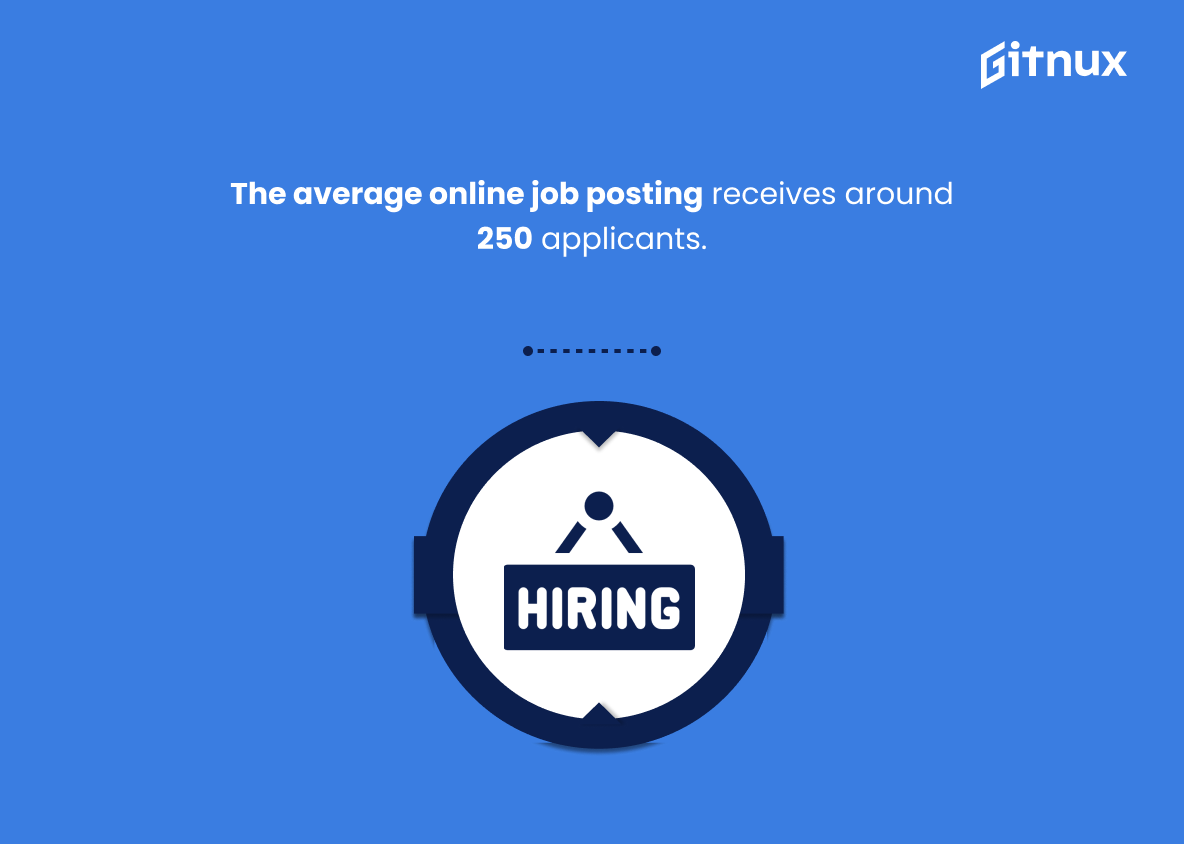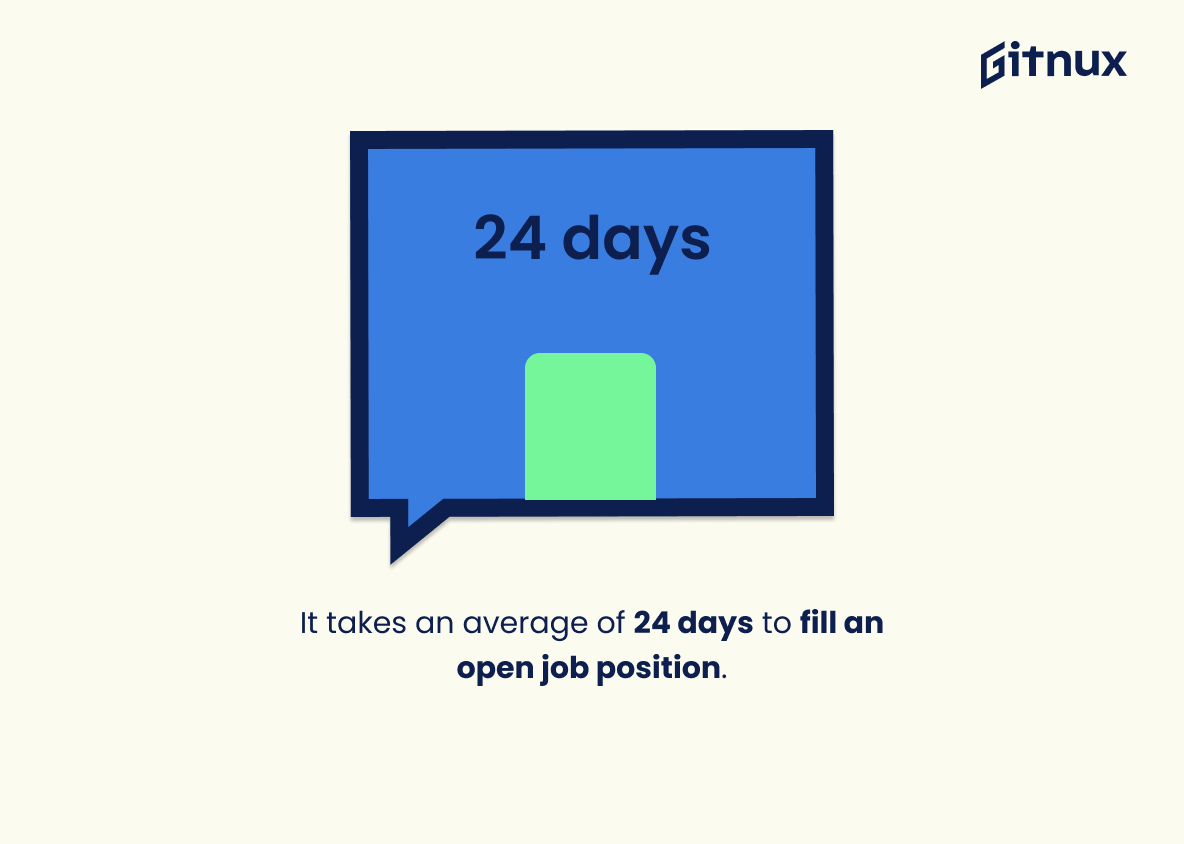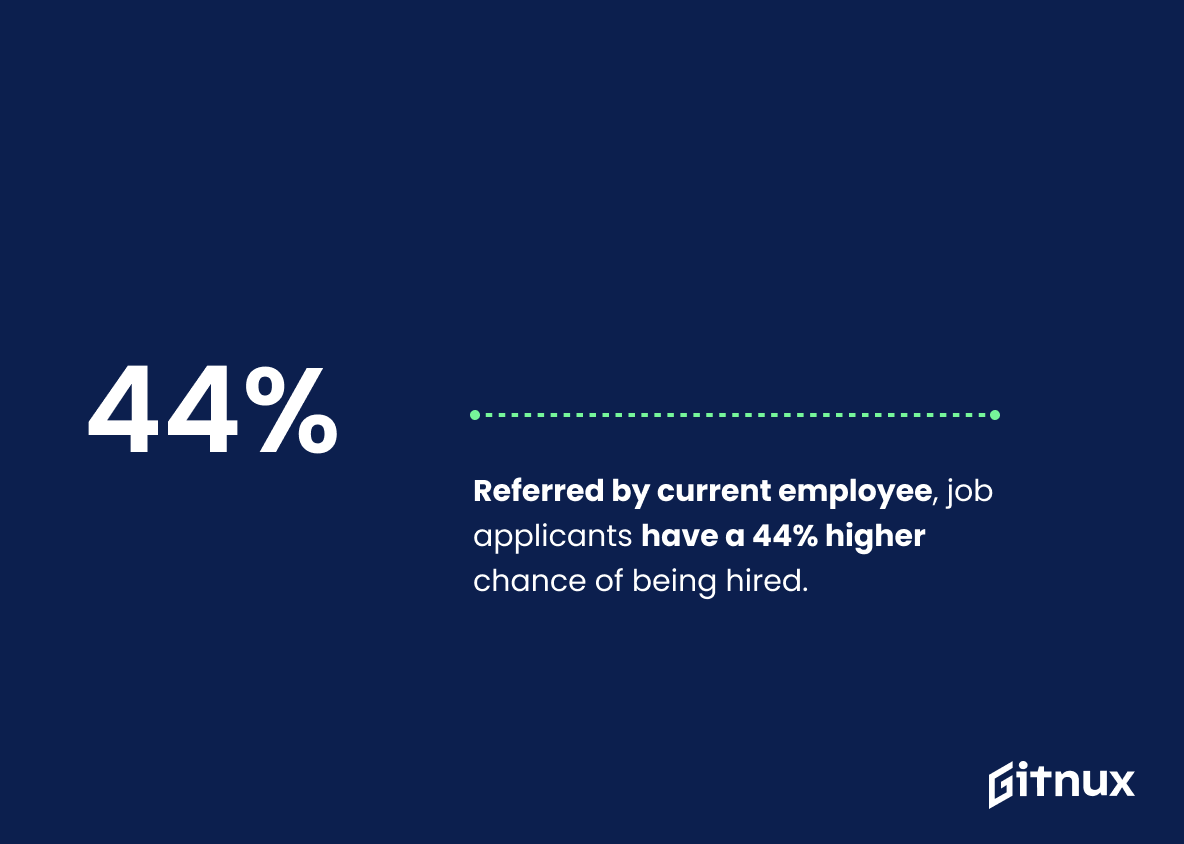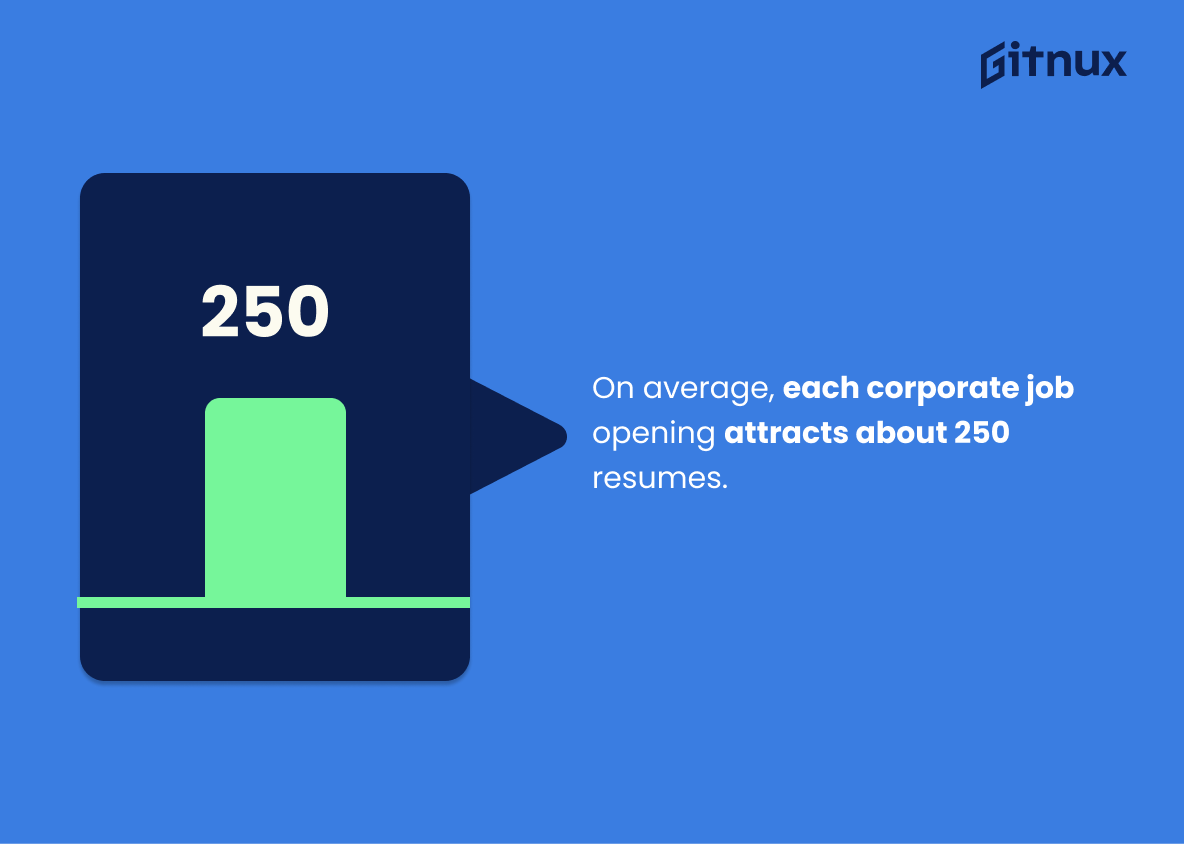Are you looking for a job? If so, you’re not alone. Job search statistics show that millions of people are searching for employment every day. In this blog post, we’ll take a look at some of the most recent job search statistics and discuss what they mean for job seekers.
We’ll also explore the best strategies for finding a job in today’s competitive market. So, if you’re ready to start your job search, read on to learn more about the current job market and what you can do to increase your chances of success.
Job Search: The Most Important Statistics
54% of employers have rejected candidates based on their social media profiles, emphasizing the importance of representing yourself appropriately online during a job search.
75% of resumes or CVs are rejected by applicant tracking systems before they reach the hiring manager, due to format, content, and lack of keywords.
Job Search Statistics Overview
60% of jobs are found through networking, not online job boards—emphasizing the importance of networking in a job search.
Networking is key to finding job opportunities that may not be available online, and can help job seekers gain access to more opportunities.
70% of jobs are never posted publicly, making networking an important tool for job seekers.
It emphasizes the importance of networking when looking for a job, as it can provide job seekers with key information and insight that they wouldn’t have access to if they were just applying to publicly posted jobs.
52 million people use LinkedIn to search for jobs each week, making it an effective platform for job seekers.
This demonstrates the effectiveness of LinkedIn as a platform for job seekers. With the ability to use filters and resources to search for open positions, LinkedIn makes it easy for applicants to find their dream job.
57% of job seekers use LinkedIn to find new job opportunities.
LinkedIn is a popular platform for job seekers, and that it is a valuable tool to use when searching for a new job. This highlights the importance of having an up-to-date profile on LinkedIn for job seekers, as it is a key platform for finding new job opportunities.
79% of job seekers use social media when conducting their job search.
Thus, job seekers are increasingly turning to social media to find open positions and that employers should consider using social media to advertise job openings.
54% of employers have rejected candidates based on their social media profiles, emphasizing the importance of representing yourself appropriately online during a job search.
Employers are also increasingly using social media to vet potential candidates, and if they find something that portrays the candidate in a negative light, they are likely to move onto the next job candidate.
The average time to find a job in 2023 is 5 months, with a range of 8 weeks to 6 months. 52% of recruiters report that the average time-to-hire after an interview is 3 weeks.
This provides job seekers with an understanding of the timeline for the hiring process. Knowing the average time-to-hire after an interview can help job seekers plan their job search and manage their expectations.
On average, recruiters spend 6-8 seconds looking at a job applicant’s CV before deciding if they are suitable for the vacancy.
This highlights the importance of having a well-structured, concise and impactful CV that can quickly capture the attention of recruiters.
75% of resumes or CVs are rejected by applicant tracking systems before they reach the hiring manager, due to format, content, and lack of keywords.
Due to this, there is a big importance of tailoring resumes to the job description and including the right keywords to ensure that resumes are seen by human eyes.
65% of recruiters mention that the resume is the most essential aspect to look into while considering job applicants.
Recruiters are placing a great emphasis on resumes when evaluating job applicants, making it essential for job seekers to ensure their resume is up to par. As such, this statistic is a valuable addition to any blog post about job search statistics.
Approximately 42% of job seekers find job opportunities through job boards.
Job boards are a valuable resource for job seekers, providing them with a wide range of job opportunities. This statistic is especially relevant for a blog post about job search statistics, as it provides readers with an insight into the effectiveness of job boards in helping job seekers find employment.
The average online job posting receives around 250 applicants.
This statistic is a telling indication of the current job market – with an average of 250 applicants for each online job posting, it is clear that competition for jobs is fierce. This statistic is an important reminder for job seekers to make sure their applications stand out from the crowd.
About 64% of job applicants use their smartphone for job search activities.
This highlights the importance of having a mobile-friendly job search experience, as well as the need for employers to be aware of the growing trend of job seekers using their smartphones to search for jobs.
It takes an average of 24 days to fill an open job position.
This highlights the importance of being patient and persistent in the job search, as it may take some time to find the right fit.
Job applicants who are referred by a current employee have a 44% higher likeliness of being hired compared to other candidates.
Having a personal connection to a company can be a major advantage when it comes to getting hired. It also shows that employers are more likely to trust and invest in candidates who have been recommended by someone they already know and trust. This is an invaluable insight for job seekers, as it emphasizes the importance of building relationships and leveraging existing connections when looking for a job.
The average job search takes about five months.
The process of finding a job is often a long and arduous one, and that it is important to remain focused and motivated throughout the entire process. It also serves as a reminder that job searching is a marathon, not a sprint, and that it is important to take the necessary steps to ensure success.
On average, each corporate job opening attracts about 250 resumes.
Job seekers must be prepared to stand out from the crowd in order to be successful in their job search. It also highlights the importance of having a well-crafted resume and cover letter that will make a positive impression on potential employers.
More than 70% of professionals are hired at companies where they have a connection.
Having a connection at a company can be a major advantage when it comes to getting hired. It also suggests that job seekers should focus on building relationships with people in their industry, as this could be the key to landing their dream job.
Job seekers searching for a remote position increased 155% from January 2020 to January 2021.
This speaks to the growing demand for remote positions, and the need for employers to adapt to the changing landscape of the job market. It is a clear sign that job seekers are looking for more flexible and convenient ways to work, and that employers must take this into account when recruiting.
73% of candidates are passive job seekers who aren’t actively looking for a job but are open to new opportunities.
This is important to be aware that a large portion of job seekers are open to new opportunities, even if they are not actively searching for them. This statistic is a reminder that job seekers should be open to new opportunities and not limit themselves to actively searching for a job.
Conclusion
Job search statistics can be a great tool for job seekers to understand the current job market and the competition they are up against.
They can help job seekers to identify the best job opportunities, the most competitive industries, and the most sought-after skills. With the right job search statistics, job seekers can gain valuable insights into the job market and use them to their advantage.
By understanding the job market and the competition, job seekers can make informed decisions and increase their chances of success.
References
1 – https://www.topresume.com/career-advice/7-top-job-search-statistics
2 – https://thesocialshepherd.com/blog/linkedin-statistics
3 – https://www.zippia.com/advice/job-search-statistics/
4 – https://standout-cv.com/how-long-recruiters-spend-looking-at-cv/
5 – https://business.linkedin.com
6 – https://blog.slideshare.net
7 – https://www.coburgbanks.co.uk
8 – https://recruitingdaily.com
9 – https://www.flexjobs.com
10 – https://medium.com
11 – https://www.forbes.com
12 – https://www.zety.com
13 – https://blog.smashfly.com
ZipDo, cited June 2023: Job Search Statistics
